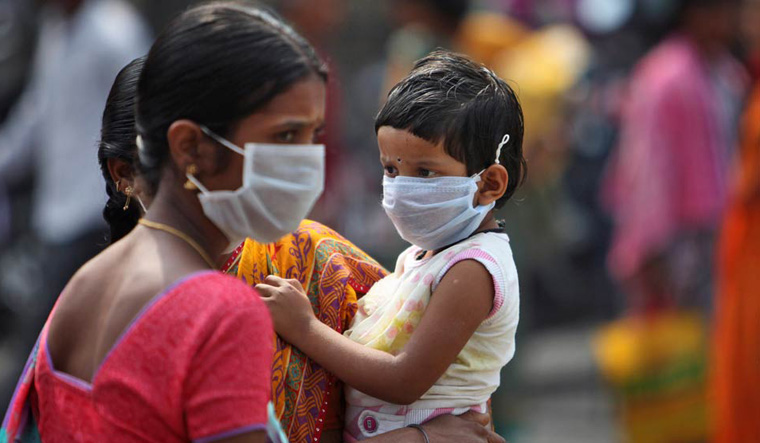After the biggest outbreak of Zika in the country, Rajasthan is now grappling with yet another viral disease—swine flu, or seasonal influenza caused by the H1N1 virus. Out of 6,701 cases, and 226 deaths due to swine flu this year, the state accounts for 2,263 cases and 85 deaths. This is followed by Delhi with 1,011 cases, with no deaths, according to data (until February 3) from the National Centre of Disease Control (NCDC). However, Delhi reported one death from the flu on February 5.
According to the Centre, majority of deaths have been reported from Rajasthan, Gujarat (43) and Punjab (30). Last year, India saw 14,992 cases, and 1,103 deaths due to seasonal influenza, and the year before saw close to 39,000 cases and 2,270 deaths. According to the Union ministry of health and family welfare, higher number of deaths have occurred in persons having co-morbidities such as diabetes and hypertension.
To deal with the situation, the Union health ministry has deputed a team to assess the situation in Rajasthan and assist the states in strengthening the response to a spike in the number of cases. Separate teams have been sent to Gujarat and Punjab to assist the states in outbreak response. The country's Integrated Disease Surveillance Programme (IDSP) and its state units have enhanced surveillance for Influenza like Illness (ILI) and Severe Acute Respiratory Infections (SARI), the health ministry said in a statement.
“The main influenza season in India coincides with the monsoon months [June to September]. But, in between, we also see summer peaks in February and March, as we did in 2015. The exception is the state of Jammu and Kashmir, with its temperate climate. In India, influenza occurs through out the year with a major seasonal peak during monsoon,” says Dr G. Arunkumar, head of Manipal Centre for Virus Research. The biggest outbreak of swine flu in India occurred in the year 2010, he said.
According to Dr D.S. Chaddha, director, internal medicine, Fortis Flt. Lt. Rajan Dhall Hospital, Delhi, the clinical manifestations of the flu include fever, cough, sore throat, malaise, headache, vomiting and diarrhea. Young children, though, are less likely to have the usual influenza signs and symptoms such as fever and cough, he added. Symptoms of severe disease in infants and young children may include apnea, tachypnea, dyspnea, cyanosis, dehydration, altered mental status and extreme irritability.
Those at high-risk include children under 5 years, adults over 65 years, those suffering from any chronic pulmonary condition (including asthma), those suffering from cardiovascular (except hypertension), renal, hepatic, hematological (including sickle cell disease), neurologic, neuromuscular or metabolic disorders (including diabetes), as well as those on immuno-suppressants, or suffering from HIV.
Once diagnosed with the flu, patients are advised to stay in for at least 24 hours after the fever subsides, keep themselves hydrated, cover their hands while sneezing and coughing, and wear a face mask at all times to prevent the virus from spreading.



